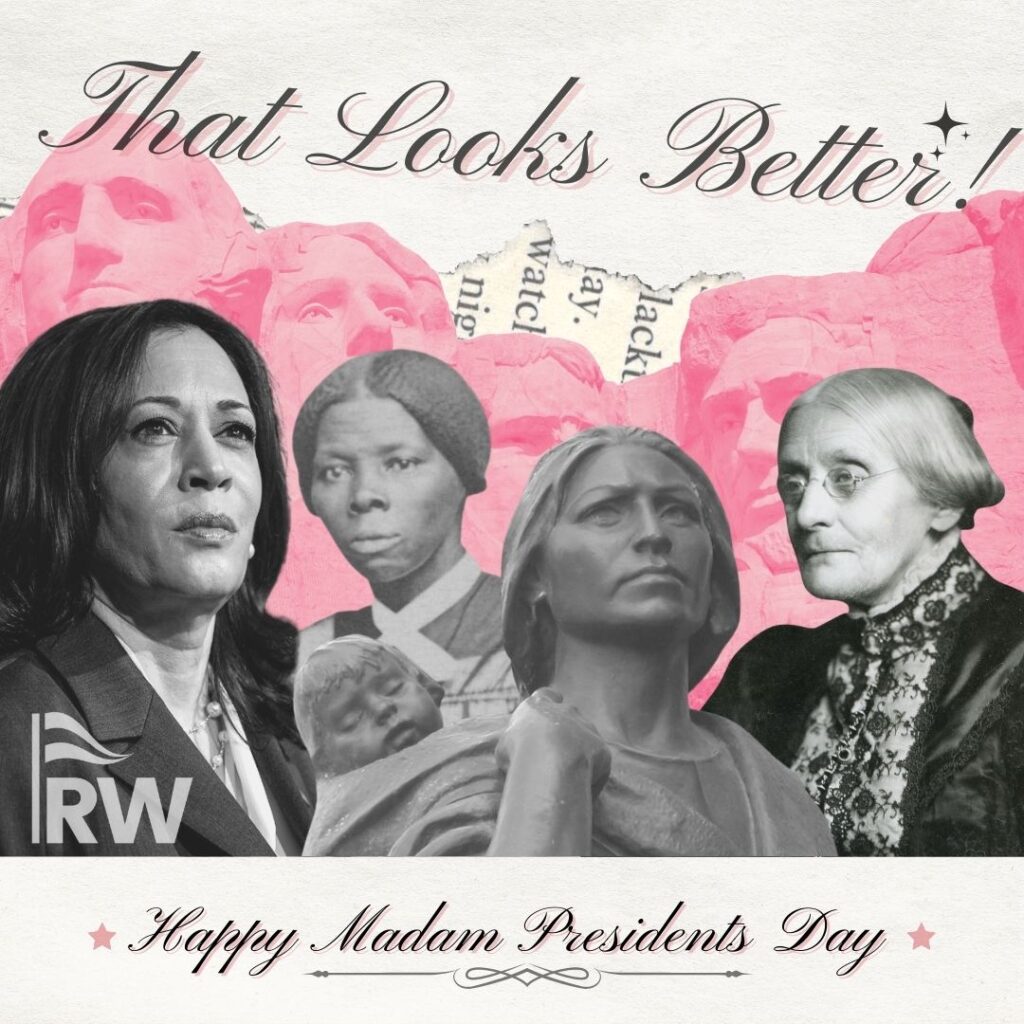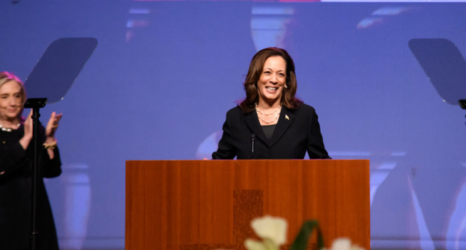Imagine an America where a young girl can see her future reflected in the face of her president.

On Presidents’ Day, we reflect on the legacy of the presidents who have led our nation since our founding. These leaders have differed in their ideologies, their policies, their professional experience, their age, their marital status. But in over 230 years of United States presidents, not one of them has been a woman.
Throughout our nation’s history, our government has been led by men. And those men—however capable and inspiring—have only slowly and begrudgingly conceded power to women. We forget sometimes how recently women in America could not vote, or hold a credit card, or have the right to their own bodily autonomy. In fact, these basic human rights are apparently still up for debate within the halls of government.
We know that the U.S. lags pitifully behind other countries when it comes to women in government. When the International Parliamentary Union measures the proportion of women in national legislatures, the U.S. doesn’t rank in the top 10. We don’t even rank in the top 50. According to our analysis of the most recent data, the U.S. stands at 75th in terms of women’s representation, well behind countries like Germany, Senegal, Bolivia and New Zealand—all of which, not coincidentally, have also had female heads of state.
“Leadership is not easy,” said Laura Liswood, secretary general of the Council of Women World Leaders. “But it gives you power to change things, power to make things better.”
When women are able to take on positions of leadership, we all benefit. Women can only be part of the solution when they are at the table.”
We know that government is only truly representative when women have an equal seat at the table. And in a system with a single head of state, that means women having a turn to lead.

The United States has made significant progress when it comes to women in positions of leadership. The number of women university presidents and CEOs continues to grow. And we have seen how those institutions begin to change when women have a turn taking the helm.
But when it comes to government, specifically elected office, systemic barriers too often prevent women from running in the first place, or winning when they do run. Our winner-take-all elections, party nomination processes and campaign finance rules are stacked against women candidates. And these policies affect everything from local legislatures to governorships to Congress. When women are under-represented in lower levels of government, it affects the pipeline of potential women candidates for higher office. Not to mention, as Joe Alper noted some 30 years ago, “the pipeline is leaking women all the way along.”
Systemic barriers too often prevent women from running in the first place, or winning when they do run.
Certainly, our general failure to achieve gender balance in government is part of the reason why we have not yet had a woman president. 18 states have still never had a woman governor, for example. In 2023, we have the highest number of simultaneously serving women governors in history: 12. We’re not even halfway to gender balance.
Some would argue that the United States is still “not ready” for a woman president, that our culture remains too steeped in sexism and patriarchy to allow a woman to hold the highest office in the land. But women have been running for the presidency for years—and to be clear, we already have elected a woman. Hillary Clinton won the popular vote in 2016; it was only our antiquated electoral college that prevented her from assuming office.
“It is crucial that we look to structural reforms to address this gender imbalance,” said Celinda Lake, prominent political strategist and pollster. “Electoral reforms such as ranked-choice voting for presidential primaries can help ensure that our best and brightest have a seat at the table.”
It is not only the nebulous specter of sexism and patriarchy that stands in the way of a woman U.S. president. To blame such enemies is to throw up one’s hands in hopelessness. But many of the barriers standing in the way of a woman president are tangible and changeable. We can change our electoral systems to be more fair and representative. Our political parties can commit to supporting women candidates. We can change the way campaigns are financed to ensure people of all backgrounds can participate in our political system.
Why does it matter? Why is it so important to elect a woman as president of the United States? With or without political power, American women have always been leaders. But we know that government is only truly representative when women have an equal seat at the table. And in a system with a single head of state, that means women having a turn to lead.
There is one way to ensure that the United States finally catches up to the rest of the world and elects a woman president in 2024: for both parties to commit to nominating a woman. There is no shortage of highly qualified women candidates on both sides of the aisle. The two major parties have a crucial role to play, financially and strategically, to bring America’s leadership into alignment with its population. It is past time to put small-minded political maneuvering aside and put forward a full slate of women candidates.
Women are done being told to wait their turn. We’ve been waiting for long enough. Everyone deserves to see themselves reflected in our government, but that cannot happen when we continue to uphold systems that were built for a very specific group of people: white, land-owning men.
Women have played an essential role in creating the America we know today. Imagine an America where women do not only have to lead from the sidelines, but can take up the mantle of leadership; where a young girl can see her future reflected in the face of her president.
Up next:
U.S. democracy is at a dangerous inflection point—from the demise of abortion rights, to a lack of pay equity and parental leave, to skyrocketing maternal mortality, and attacks on trans health. Left unchecked, these crises will lead to wider gaps in political participation and representation. For 50 years, Ms. has been forging feminist journalism—reporting, rebelling and truth-telling from the front-lines, championing the Equal Rights Amendment, and centering the stories of those most impacted. With all that’s at stake for equality, we are redoubling our commitment for the next 50 years. In turn, we need your help, Support Ms. today with a donation—any amount that is meaningful to you. For as little as $5 each month, you’ll receive the print magazine along with our e-newsletters, action alerts, and invitations to Ms. Studios events and podcasts. We are grateful for your loyalty and ferocity.





